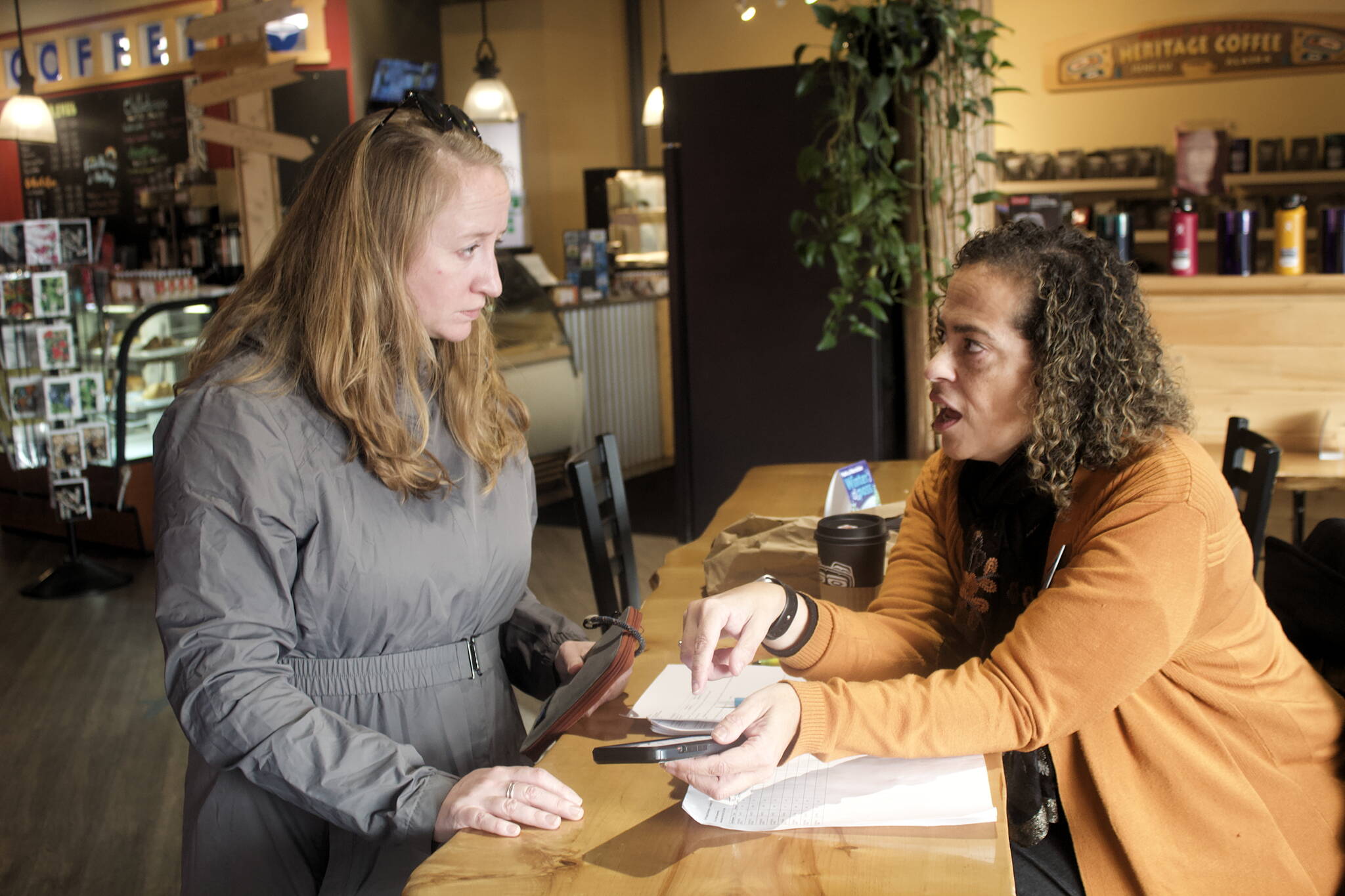Jessica Cook sat alone in the downtown Heritage Coffee shop on Friday afternoon, four days before voters will decide the fate of the Democratic party’s nominee for lieutenant governor, with a stack of eight “turf packets” hoping some of the people contacted by a campaign coordinator would show up to knock on the doors listed in each packet.
“You have your addresses and names of people who’ve been identified as potential voters,” she said, noting number of households range from 25 to 51 in the packets. There’s a simple script with a few questions to ask people who open doors about their voting intentions so “we’re not sending out volunteers cold and untrained.”
The questions include asking residents who they’re planning to vote for, if they plan to rank other candidates via the state’s new ranked choice balloting, if they want a yard sign and if they’re interested in volunteering. While the latter two questions are rather late in the campaign cycle to have much impact — Cook said the same questions have been asked door-to-door for months — there’s not any time-consuming screening process to ensure people saying they want to be last-minute volunteers aren’t proverbial Manchurian candidates.
“We’ve got to rely on human kindness honesty and charity,” she said.
Cook, who arrived in Juneau late Thursday and planned to leave Friday evening, also spent her visit participating in “phone banking” potential voters, and meeting with various small groups and individual officials likely to be supportive of her ticket. While it’s not a schedule seeking to sway as many voters as possible with every last hour, she said the primary period of persuasion came during the many months of campaigning.
“A lot of the voters I think at this point know who they’re voting for,” she said.
But Cook and other office seekers are generally engaged in full-speed-ahead activities through Tuesday, culminating in the inevitable groups of sign wavers on heavily trafficked streets. Among them is Juneau state Sen. Jesse Kiehl who said he’s reaching out to about 120 people who’ve helped his past campaigns, even though this year he’s unopposed.
“I think a lot of people will go and want to wave signs for their favorite statewide candidates, and they may wave my signs as well,” he said.
While a supporter was at Heritage Coffee to greet Cook (but not walk a neighborhood with a turf packet) when she arrived early Friday, nobody else showed up for canvassing duties during the 90 minutes she spent there. While the absence of volunteers might be seen an ominous indicator of support, Kiehl said if 10% of the people contacted to wave signs actually show up “you’re doing well.”
As for the value of sign wavers, he said it’s useful for the public at large who might not participate in election day otherwise.
“There are a lot of folks who are not political junkies like I am,” he said. “Those big crowds can help remind people ’oh yeah, that’s today. I’ve got to go vote.’”
The new system of voting will also make election night both more suspenseful and less meaningful than past years, since the state Division of Elections will release only the first-choice picks of ballots received and tallied. Additional mail-in, challenged and other uncounted ballots will continue to be tallied for 15 days after the election, after which the full first-choice results will be released — and the subsequent rankings instantly calculated for races where no candidate gets a majority.
Cook said she will spend her Election Day morning with sign waivers in Palmer to catch the attention of Matanuska-Susitna Valley commuters on their way to Anchorage, then her afternoon sign waving in Anchorage since it’s close to the campaign’s main office. But the night of the election will be somewhat anticlimactic.
“Because of ranked choice voting election night is going to have a whole different feel,” she said. “It used to be like a sporting event.”
Instead this year will likely be a celebration — of surviving the campaign grind — with a small number of people at the main campaign office in Anchorage with some visits to supporters gathered elsewhere, Cook said.
Kiehl said he’s planning to spend much of Election Day waving signs at the downtown intersection of Egan Drive and 12th Avenue. He’s also planning to have hot coffee available for volunteer sign wavers, but hasn’t checked the weather forecast to see how much they might need its warmth as well as caffeine.
“The election is Tuesday no matter what the weather is,” he said.
• Contact reporter Mark Sabbatini at mark.sabbatini@juneauempire.com

